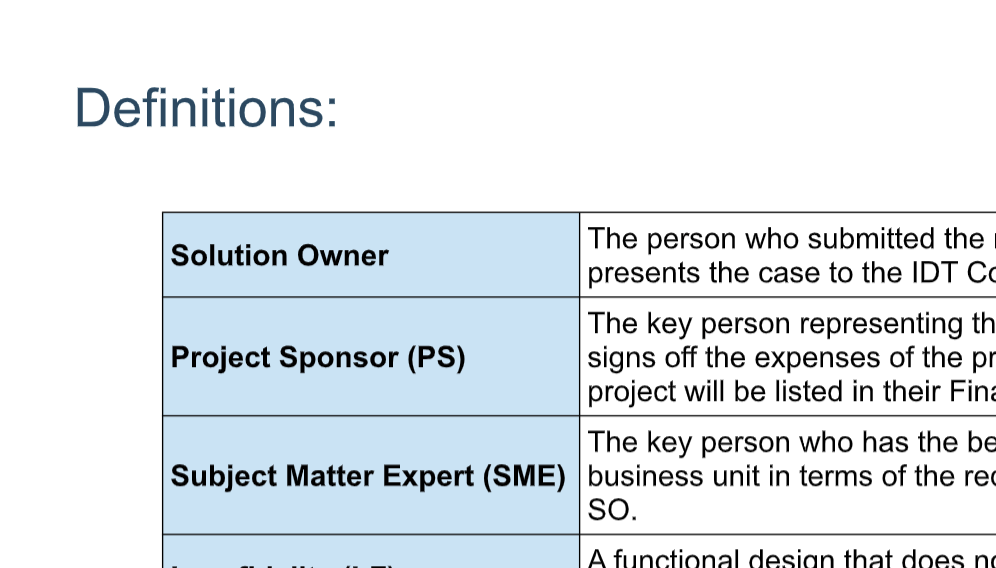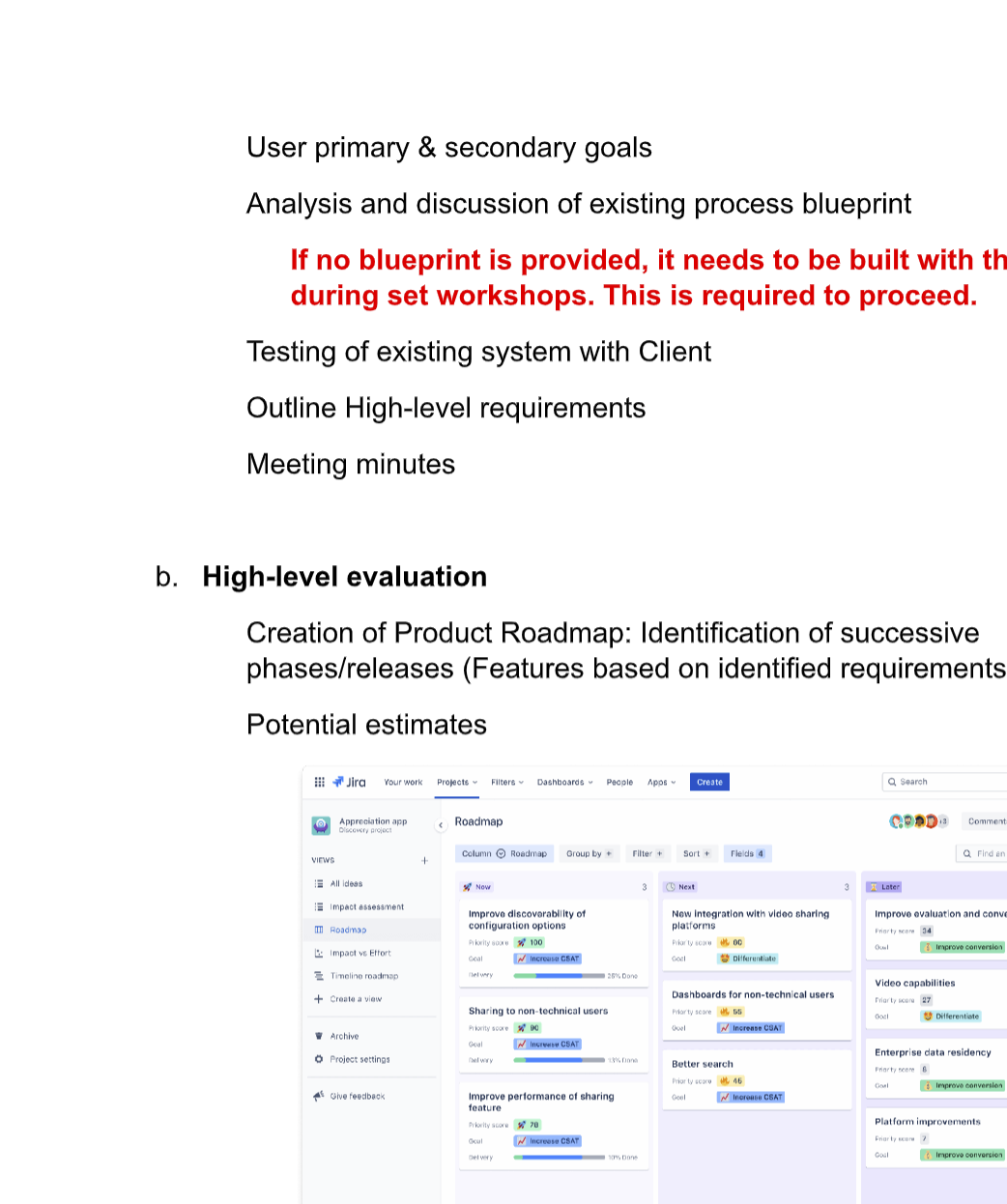
As Head of Product Design (UX/UI), I led a process transformation initiative within a professional services company aimed at optimising the product development lifecycle by improving collaboration, efficiency, and decision-making. The existing workflow suffered from unclear documentation, late-stage design revisions, and a lack of structured tracking, leading to bottlenecks in execution.
By introducing structured workflows, data-driven metrics, and sprint-based delivery, we achieved a 30% reduction in turnaround time, improved cross-functional collaboration, and established a scalable framework for future product iterations. Additionally, a structured support framework was implemented, ensuring smooth handover, issue tracking, and hyper care for business unit clients.
Before the transformation, the product development process was highly fragmented with unclear ownership, undefined requirements, and inefficient documentation practices. These gaps led to delayed timelines, resource constraints, and repeated design changes, ultimately impacting business objectives and user experience.
1️⃣ Lack of Process Visibility & Structure:
The absence of a defined blueprint resulted in misalignment across business, UX, support, and tech teams. Workflows were often reactive, and handovers were inconsistent.
2️⃣ Unstructured Requirement Gathering & Documentation:
The Product Requirements Document (PRD) was often outdated or incomplete, leading to misinterpretations and last-minute scope changes. Additionally, the lack of standardization made it difficult to track iterations and feedback loops.
3️⃣ High Uncertainty & Late-Stage Design Changes:
Without a structured process for validating requirements early, teams frequently operated on assumptions, which caused major rework during development. UX deliverables were often handed over too late, leading to design constraints and increased implementation effort.
4️⃣ Inefficient Sprint Planning & Execution:
Sprint goals were ambiguous, and development often progressed without clear validation checkpoints. This resulted in scope creep, inefficient resource allocation, and delayed releases.
5️⃣ No Data-Driven Tracking of Performance & Support Issues:
There were no structured KPIs to track velocity, sprint efficiency, or user-reported issues, making it difficult to assess bottlenecks and optimize workflows.
6️⃣ Lack of Structured Support & Handover to Business Units:
No formal process existed for training the support team on new functionalities before rollout.
To address these challenges, I spearheaded a strategic overhaul of the product development lifecycle, focusing on streamlined documentation, structured sprint execution, and data-driven insights. The new framework introduced clear roles, defined checkpoints, and improved collaboration between UX, BA, Dev, and Support teams.
We developed a process blueprint that mapped out all key phases, ensuring structured execution from ideation to delivery. Each phase included defined deliverables, reducing ambiguity and creating a standardized workflow.
✅ Introduced a modular process where deliverables were clearly segmented into pre-development (UX, PRD), execution (Sprint Implementation), and post-development (Validation & Handoff).
✅ Defined ownership for each phase, ensuring UX, BA, Support, and Dev teams had clear responsibilities and expectations.
✅ Shifted from document-heavy workflows to actionable artefacts, ensuring that documentation remained relevant and easy to track.

To eliminate misalignment and scope creep, we restructured the requirement gathering process, making it more systematic and transparent.
✅ Standardised PRD templates to include clear objectives, expected outcomes, and technical constraints.
✅ Linked PRDs directly to User Stories, allowing development teams to see business objectives alongside technical requirements.
✅ Established a structured feedback loop, ensuring PRDs were continuously updated and approved before sprint execution.
✅ Ensured UX artefacts (wireframes, prototypes, and user flows) were validated before development began, reducing last-minute design changes.
PRDs were linked directly to user stories, allowing dev teams to see business objectives alongside technical requirements.
To ensure a smooth transition for support teams and business unit clients, we introduced two key phases:
✅ Workshop-Style Handover for Support Teams
✅ Hyper Care Phase for Business Units

To improve decision-making, we integrated Azure DevOps, PowerBI, and Microsoft Projects to track sprint velocity, bottlenecks, and user-reported issues.
✅ Built real-time dashboards to visualise team workload, task completion rates, and sprint efficiency.
✅ Implemented sprint burn-down tracking, allowing leadership to assess delivery timelines and identify slowdowns.
✅ Launched a PowerBI Dashboard to analyse support tickets, providing valuable insights into:
This provided leadership with a data-backed approach to identifying high-impact improvement areas.
The hyper care phase ensured a smoother transition for business unit clients, reducing post-launch friction and fast-tracking user adoption by over 50%.
🚀 30% Faster Time-to-Delivery
The new structured workflow reduced bottlenecks and rework, accelerating delivery timelines.
📈 Improved UX-Development Alignment
Early-stage UX validation led to a significant decrease down to 2.5% in last-minute design revisions.
📊 Data-Driven Support Optimization
The PowerBI dashboard provided real-time insights into weak points, allowing for proactive issue resolution.
🎯 Stronger Cross-Functional Collaboration
Enhanced handover processes improved alignment between Product, UX, Support, and Engineering teams.
💡 Faster User Adoption
The hyper care phase ensured a smoother transition for business unit clients, reducing post-launch friction and fast-tracking user adoption by over 50%.
This transformation fundamentally improved how we approach product development, making it more efficient, predictable, and scalable. Moving forward, I aim to integrate AI-driven design insights, predictive analytics, and automated UX testing to further enhance decision-making and workflow optimisation.